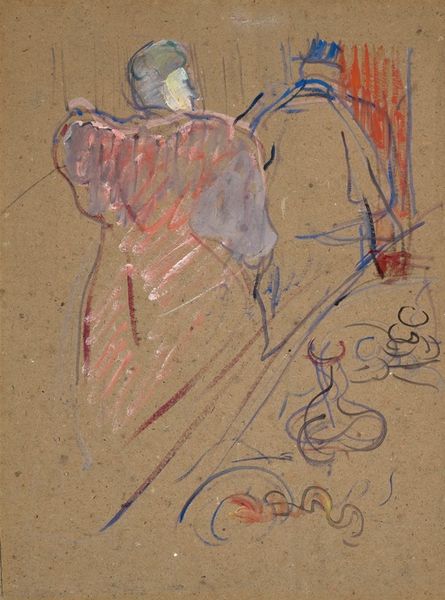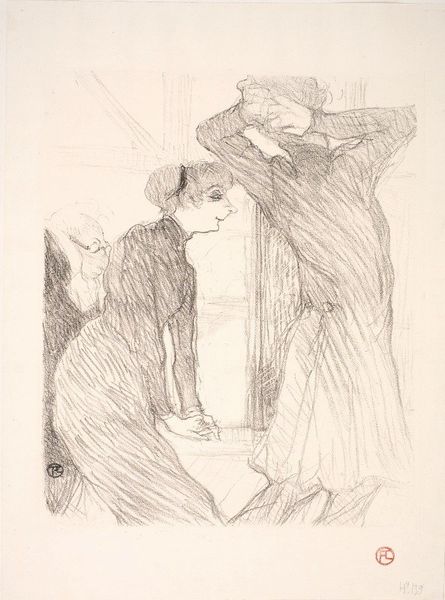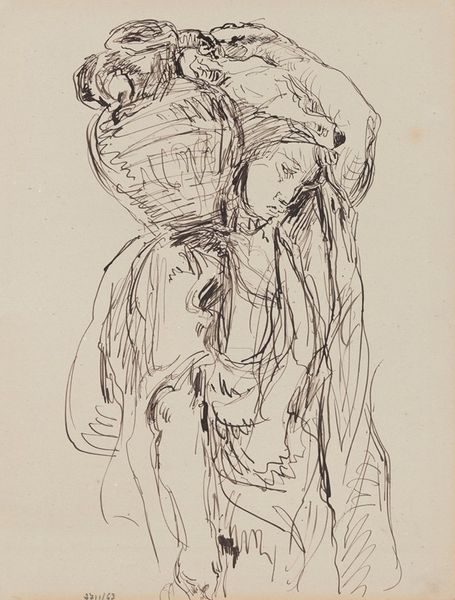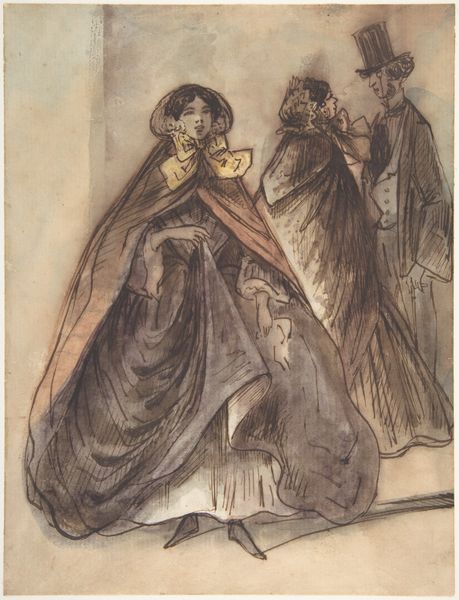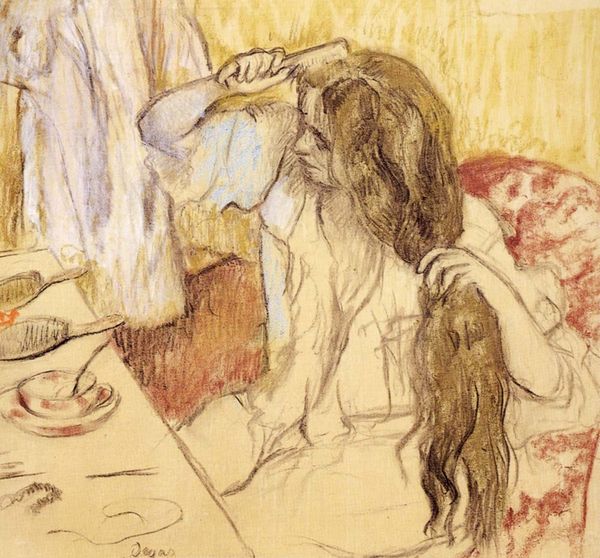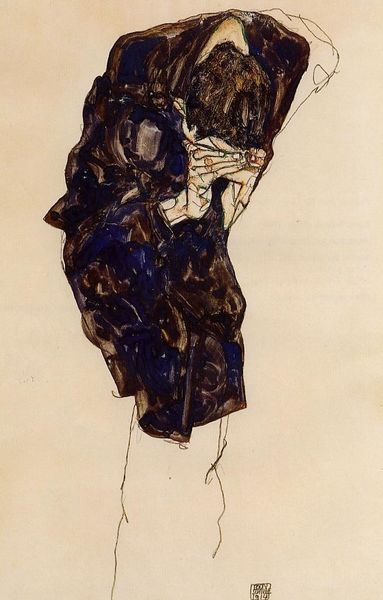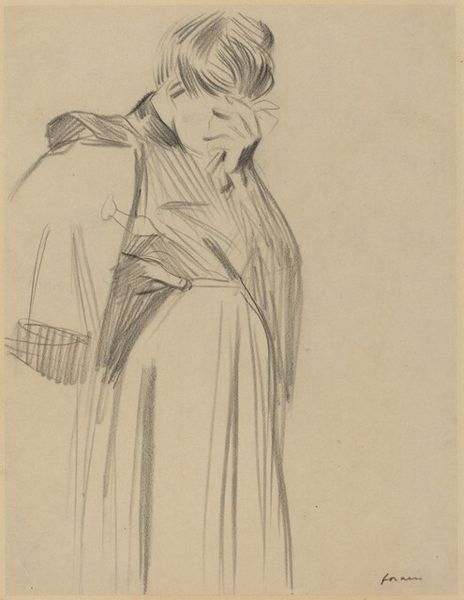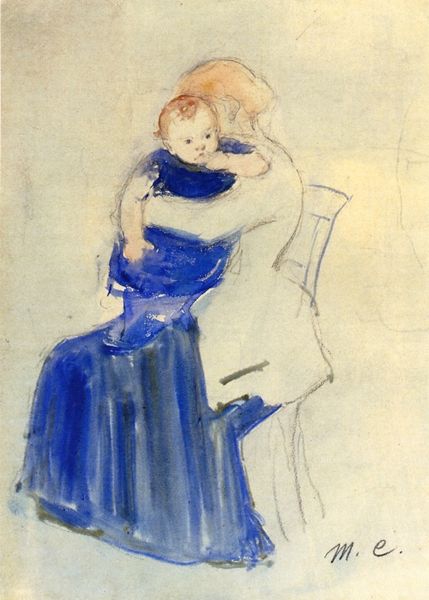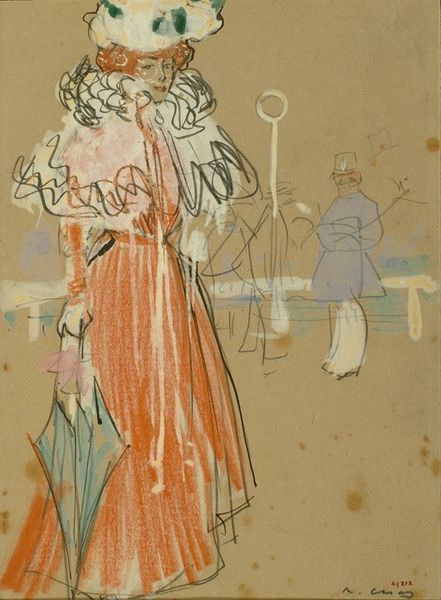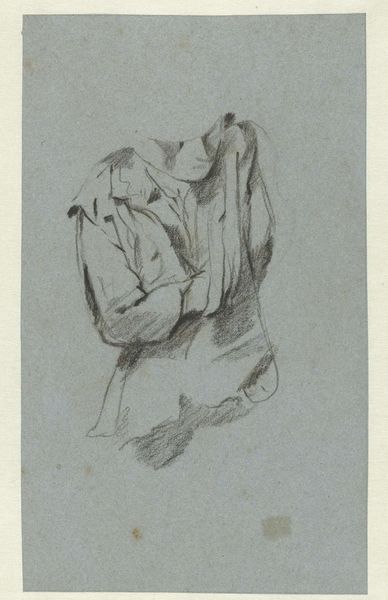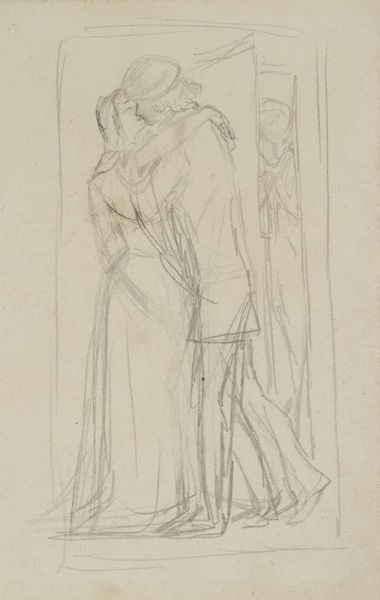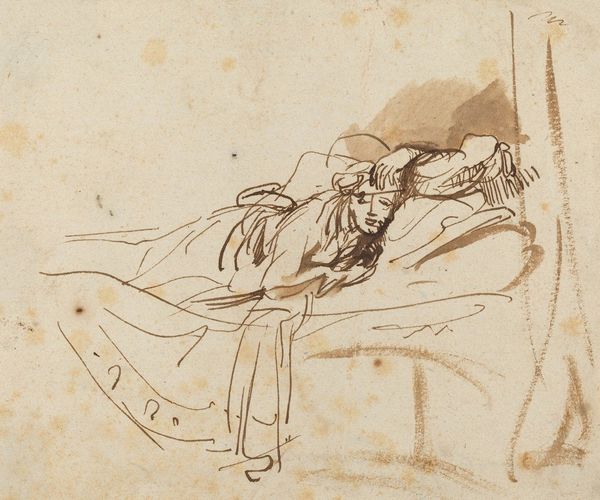
Copyright: Public domain
Editor: So, we're looking at Toulouse-Lautrec's "A Day Out," created around 1893. It looks like it’s rendered in oil paint, perhaps with some pastel and pencil. It feels like a fleeting glimpse of a moment, maybe a bit melancholic? What strikes you most about this piece? Curator: What strikes me is how this seemingly informal sketch offers a powerful insight into the constructed nature of Parisian public life in the late 19th century. How does Lautrec present class and gender in this very intimate encounter? Editor: Constructed, how so? I mean, it looks so spontaneous! Curator: Spontaneity, yes, but controlled. Lautrec’s works, particularly those depicting nightlife and leisure, should be seen within the context of growing social divides and commercialized entertainment. Notice how the quick, expressive strokes create an almost theatrical atmosphere. Editor: It is like we are spying a conversation between these two characters. Curator: Precisely. We become complicit in viewing these women. Lautrec was operating within, and also commenting on, the male gaze prevalent at the time. Think about how places like the Moulin Rouge, which he famously depicted, operated. Editor: You’re saying this wasn’t just capturing reality, it was framing it? Making a statement about Parisian society and gender roles? Curator: Absolutely! And the choice of pastel and oil, quick mediums, reinforced the idea of modernity and fleeting moments but also highlight the commercial pressures artists faced to produce work rapidly for a growing art market. How do you see that relationship manifesting in the image itself? Editor: I guess that explains the unfinished quality; the fast-paced environment is replicated in the strokes. I thought it was simply capturing movement. Curator: Well, it does capture movement, but the question to constantly ask is; Why that choice? Editor: That’s really helpful. So it's not just *what* is shown, but *how* and *why* it was shown. The medium and the technique tell us as much as the subject itself. Curator: Precisely! Always consider how societal forces shape not just the subject, but also the way the artwork comes to be. Editor: I’ll definitely be thinking about the socio-political aspect of art a lot more now. Thanks!
Comments
No comments
Be the first to comment and join the conversation on the ultimate creative platform.
